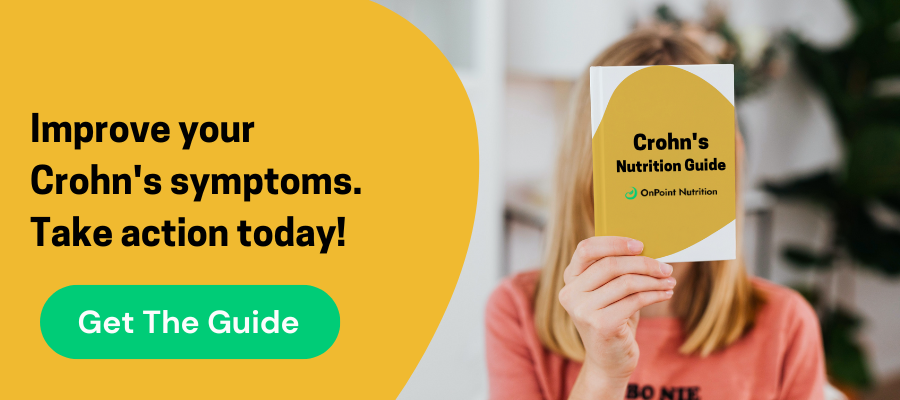
Most people with Crohn’s Disease experience pain associated with their condition. However, depending on the person, the pain’s severity and location can differ. Crohn’s Disease pain originates from inflammation in the digestive tract and can spread systemically throughout your body.
Most people experience gastrointestinal pain in the stomach, abdomen, or anus. Additionally, some people may also experience pain in peripheral parts of the body such as their joints and eyes. When managing Crohn’s Disease, it’s important to know how pain in other areas of your body may be related to your condition.
Cause of Crohn’s Disease Pain
Crohn’s Disease pain is caused by inflammation build-up in the digestive tract. Crohn’s Disease uniquely affects the entire digestive system, from mouth to anus, thus people with Crohn’s may experience pain in any or all of the areas in between. The problem with inflammation is that it has the tendency to spread, causing many people with Crohn’s Disease to experience pain in other areas of the body. New pain points is often a sign that inflammation is increasing, and your condition is becoming worse.
Characteristics of Crohn’s Disease Pain
Each person perceives pain differently, and thus describes their pain in different ways. We list common pain descriptors below:
- Cramping
- Stabbing
- Burning
- Aching
- Painful Spasms
- “A Charley Horse in your gut”
- Tightness
Crohn’s Disease pain location can also differ from person to person, depending on which part of their gastrointestinal system is most affected. The most common locations of Crohn’s Disease pain are listed below:
Abdominal pain
- This pain is typically associated with inflammation in the small and large bowel.
- Often described as aching, cramping, spasmic pain.
Rectum
- This pain occurs around the rectum and is often caused by irritation with passing bowel movements.
- Often described as burning, stabbing, or pulsing pain.
Joints
- This pain can occur in any joint throughout the body such as knees, wrists, fingers, and spine.
- This is often described as achiness and tightness in the joints.
Eyes
- Crohn’s Disease can cause eye redness, swelling, dryness, and irritation.
The mechanism in which Crohn’s Disease inflammation leads to systemic inflammation is not exactly clear, but researchers believe that people with Crohn’s overproduce antibodies, which can trigger an immune response throughout the body. While not all people with Crohn’s Disease will experience pain in other areas, almost all people with Crohn’s Disease will experience GI pain at some point in their life… especially if the condition is not treated.
If you suspect the pain you’re experiencing may be related to your IBD, we recommend speaking with your doctor about a well-rounded treatment plan.
Crohn’s Disease Pain Triggers
While Crohn’s pain can be managed through a mixture of dietary changes and medication, there are also behavioral changes that can greatly improve pain associated with your condition. Here are some examples of behavioral triggers.
Irregular eating habits
Waiting too long to eat after waking up, skipping meals, and eating too quickly are all irregular eating habits that can affect your digestive system. People with Crohn’s Disease tend to experience less pain when they eat smaller, more frequent meals because this allows their body to more effectively digest and pass food. It is also beneficial to eat slowly in a relaxed environment.
Emotional stress
External stressors can harm your body more than you may realize. The brain and gut are so interconnected, that your stress level may cause “extra” inflammation in your gut. Stress and GI conditions are a tricky duo because the stress-gut connection is very cyclical in nature- one usually leads to the other. Having an arsenal of stress-management techniques is crucial to managing any GI condition.
Food triggers
When you’re in an active Crohn’s flare (i.e., your symptoms are active), you may need to make temporary changes to the foods you’re eating. We recommend a low-fiber, low residue meal plan to allow your gut to heal. Once you’ve reached a period of being symptom-free, you may slowly reintroduce high fiber foods, as long as your symptoms do not return. To read more about how to treat a Crohn's Disease flare, click here.
Although Crohn’s Disease is a chronic condition, your pain doesn’t have to be! You can experience long periods of remission and be symptom free if you find the right treatment approach for you.
The key is to identify your specific dietary triggers and learn how to modify your approach based on the stage of your condition. If you’re having trouble managing your Crohn’s we recommend working with a dietitian who can help you obtain and sustain remission.

Topics

Kaitlyn Willwerth is a Registered Dietitian at OnPoint Nutrition. Kaitlyn's work focuses on providing individualized health and lifestyle coaching and, most importantly, support. She is a Certified LEAP Therapist and has also completed the Monash University 'Low FODMAP Diet for IBS' online training course for health professionals.




